Art educators have so many objectives to teach it can often feel daunting. This is especially true considering the vast number of art vocabulary words our students are required to master by the time final exams roll around. If you’re in the same boat, I’ve got the lesson for you!
Introducing: Visualizing Vocabulary!
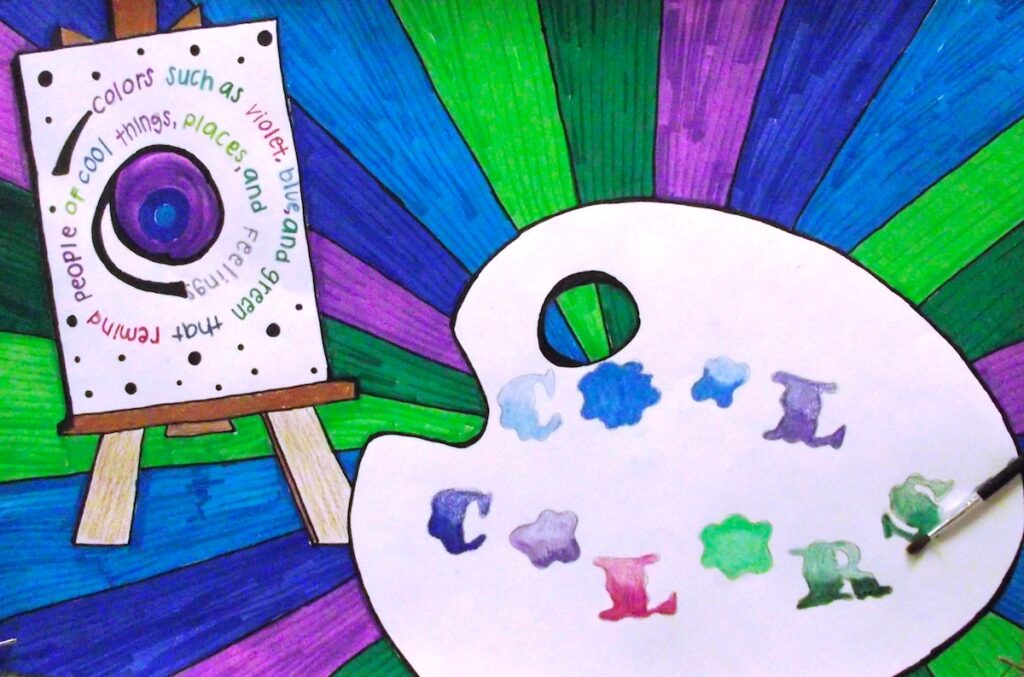
This lesson requires each student to design an artwork that defines and illustrates a visual art vocabulary word. I generally present it early in the semester after I begin to get an idea of where my students’ individual skill sets are. I offer a variety of vocabulary words from the list they are required to know. Some of the words are simple while some are more complex and challenging. I love this kind of divergent thinking, and kids love this challenge!
Our visual art vocabulary list is as follows, but you can certainly customize this list depending on what your district requires:
– analogous colors
– architect
– artist
– balance
– calligraphy
– caricature
– cartoon
– chalk
– collage
– color
– complementary colors
– composition
– contour line
– contrast
– cool colors
– crosshatching
– design
– elements of design
– emphasis
– fashion designer
– figure/ground
– foreground
– form
– genre
– graphic designer
– harmony
– hatching
– hue
– implied line
– intensity
– interior designer
– line
– linear perspective
– mosaic
– movement
– negative space
– neutral colors
– one-point perspective
– opaque
– optical mixing
– outline
– pattern
– perspective
– photography
– picture plane
– pigment
– positive space
– primary colors
– proportion
– radial balance
– repetition
– rhythm
– saturation
– secondary colors
– shade
– shape
– space
– split-complementary
– subject matter
– tempera
– texture
– three-dimensional
– tint
– triadic color scheme
– two-dimensional
– two-point perspective
– unity
– value
– variety
– vehicle
– warm colors
– wash
Here are the steps to follow.
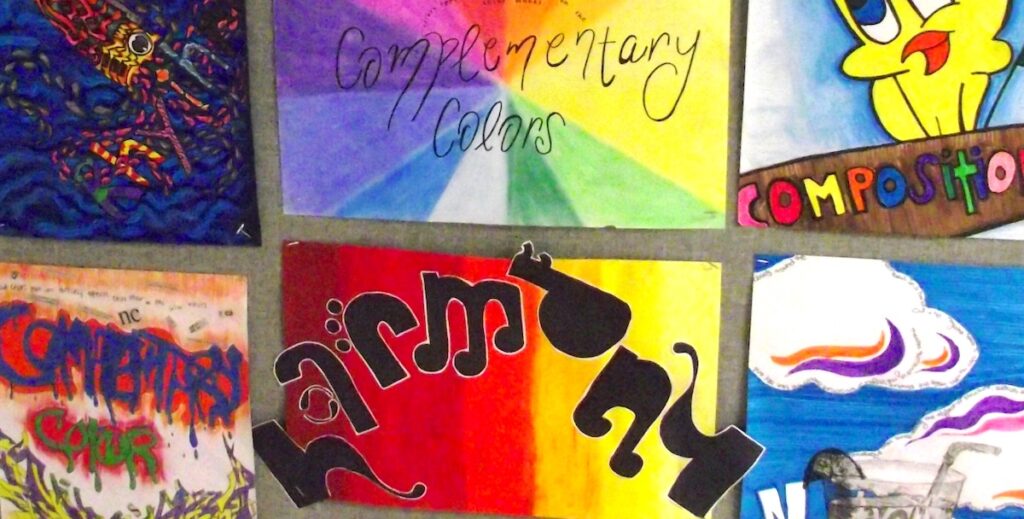
1. Give students an art vocabulary word and the project requirements.
For this project, you can either assign students a word or have them choose their own. Students are required to do their best to illustrate their word, communicating its meaning through their work. In addition, students must include the definition of the word somewhere in their piece.
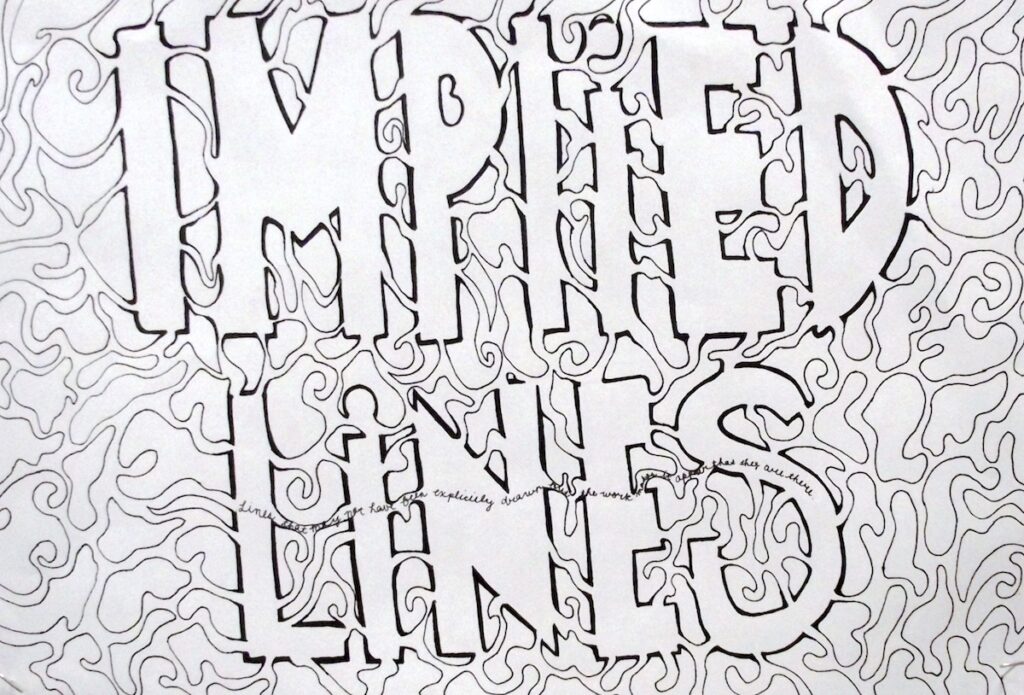
2. Have students research their word and plan for their final piece.
Once students have selected their word, they have to do a bit of research. As I mentioned, they have to find the definition because they are required to creatively add it somewhere in their final piece. I challenge them to show how the word is used in the context of visual art. It’s exciting to have them brainstorm the different ways they can accomplish this goal.
I love the excitement in the room after I have given each student their word and they quickly get to work. The beginning sketches are always fascinating to see. In my room, students are eager to showcase the new skills they’ve gained from some previous open studio days. It’s great to see them so confident and excited to explore! They truly rise to the challenge of this lesson and are ready to WOW.
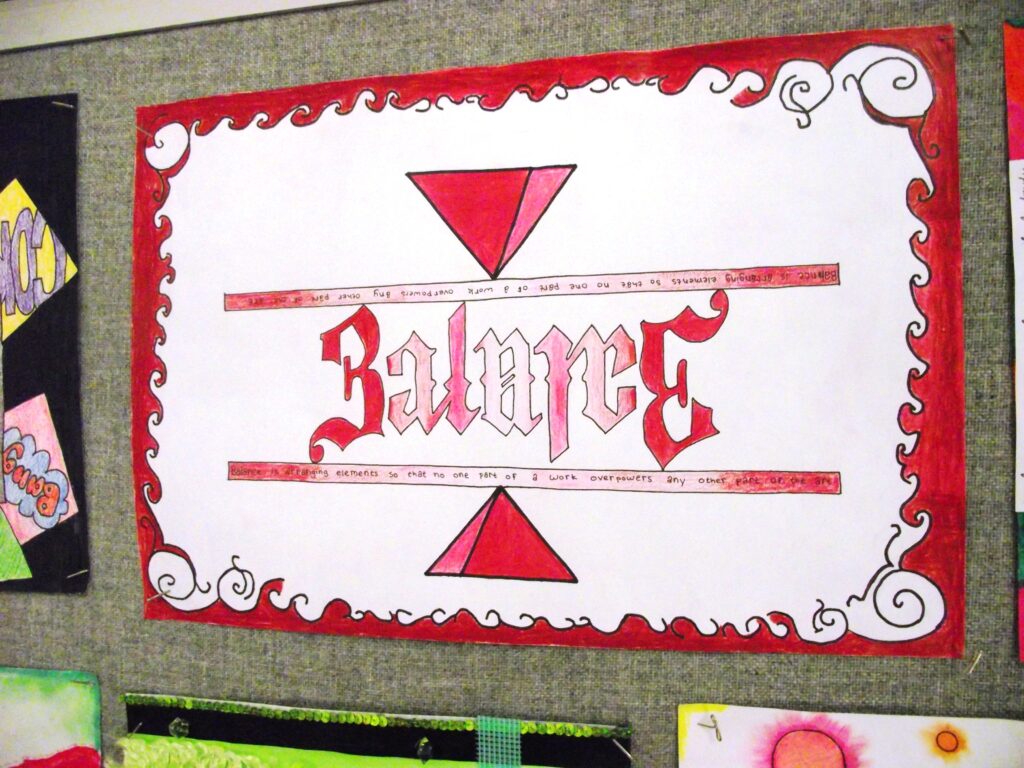
3. Give students a week to complete their work.
For their final piece, I have students work on 12″ x 18″ white drawing paper. They can use various fonts and often experiment with size and different creative imagery that helps illustrate their word. In my room, students can use any media they are comfortable with. This may include marker, graphite, oil pastel, colored pencil, crayon, watercolor, or collage.
4. Create a display!
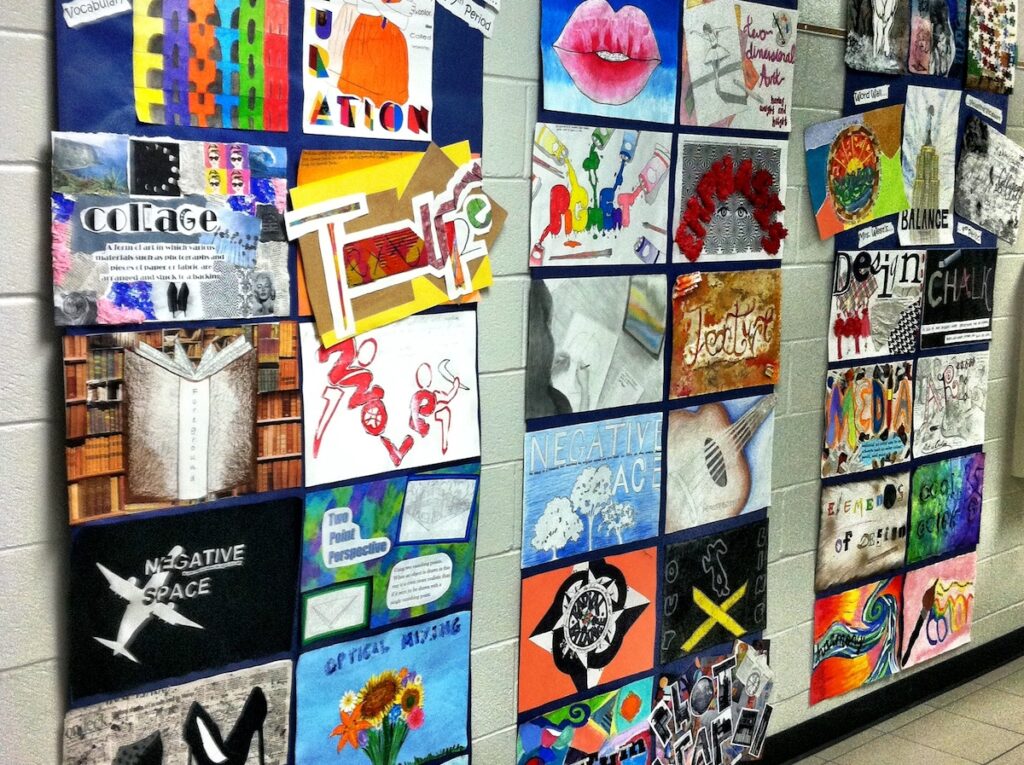
Since students are required to add the definition of their word into their composition, these works become teaching tools. In essence, we are creating a type of “study guide” in our art hallway. Students know most of these works will be hung in a semester-long exhibit. This fact entices them to work extra hard for that pat on the back and acknowledgment every student deserves when they give their very best.
This project’s benefits truly reach beyond the art room.
Each year our word wall exhibit gets stronger and stronger. Due to these beautiful and well thought out works, our county assessment scores have actually risen over the years. I believe our students retain more when they learn it, create it, and SEE it every day.
These visual art vocabulary artworks are amazing. The best part is that Language Arts teachers have now come and asked our department to help them teach this lesson to their students to help with SAT words! Just another great reason why the arts should be integrated into every subject!
How do you use text and graphic design elements in your curriculum?
How are you teaching your students about the art vocabulary they are required to retain?
Magazine articles and podcasts are opinions of professional education contributors and do not necessarily represent the position of the Art of Education University (AOEU) or its academic offerings. Contributors use terms in the way they are most often talked about in the scope of their educational experiences.





